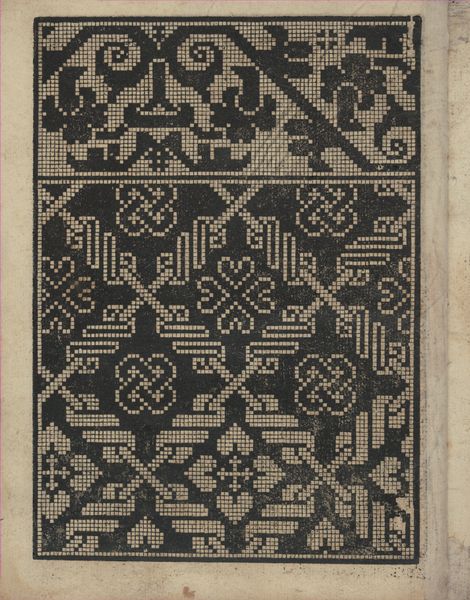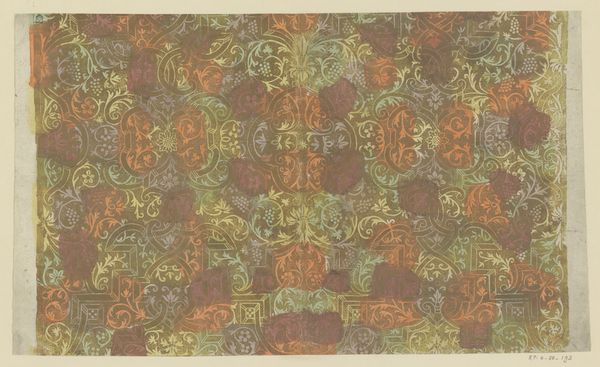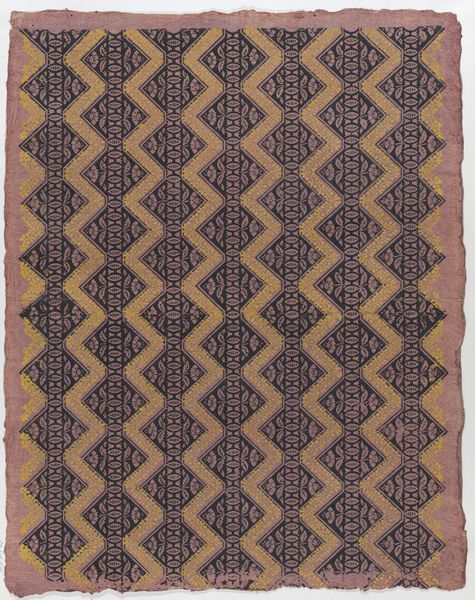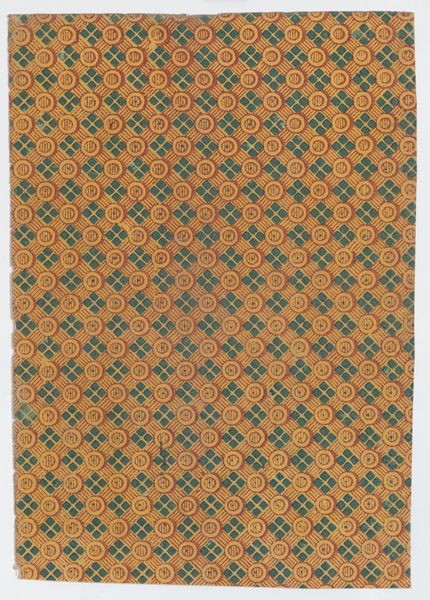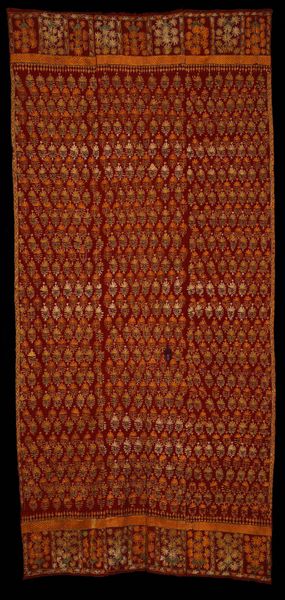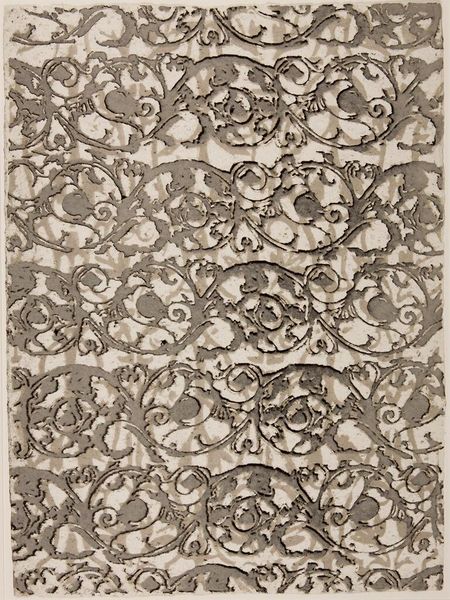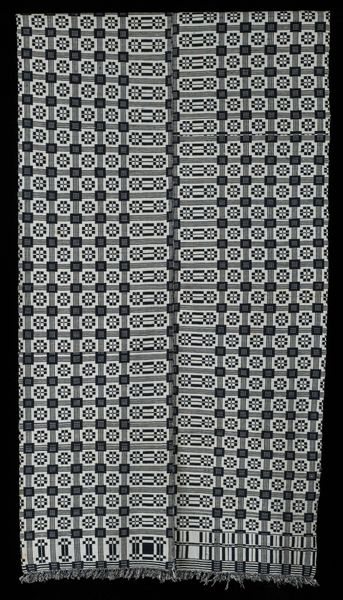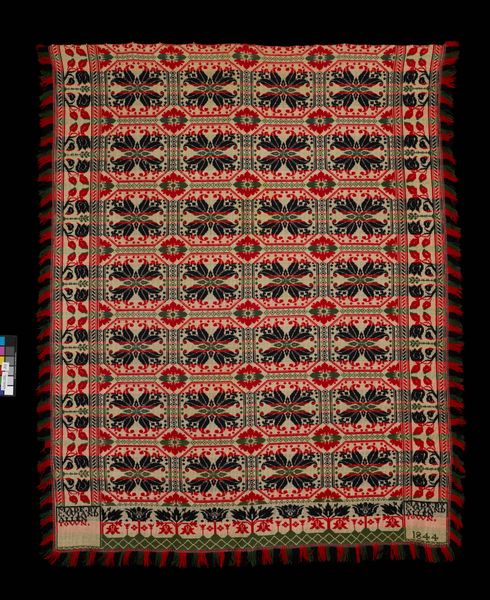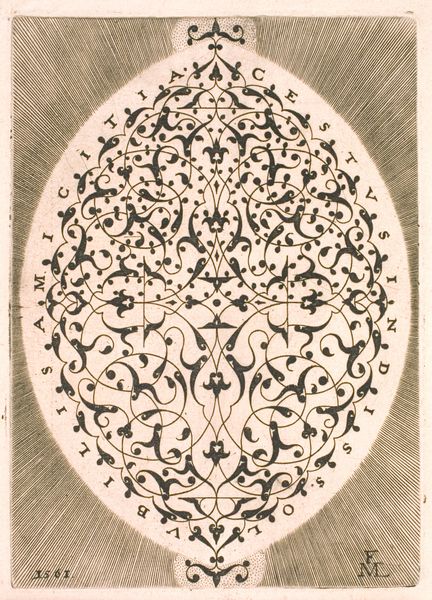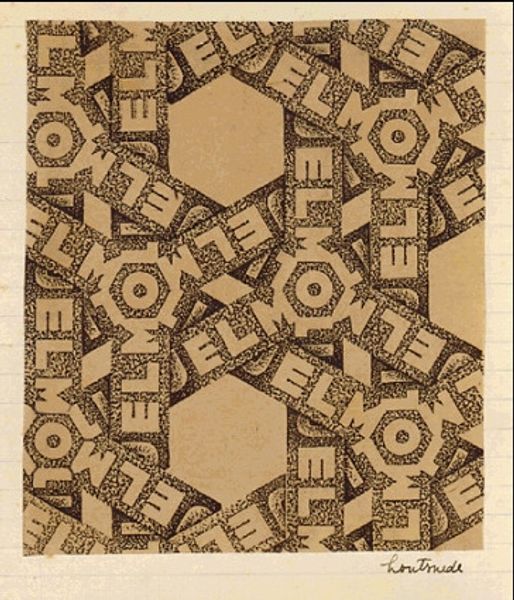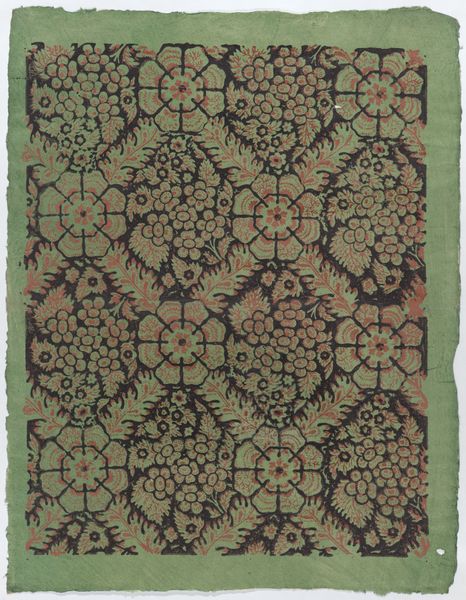
graphic-art, print, textile
#
art-deco
#
graphic-art
# print
#
pattern
#
textile
#
text
#
geometric
Copyright: M.C. Escher,Fair Use
Curator: Well, isn't this intriguing? Here we have M.C. Escher's "Design for the Gerzon store in Amsterdam" from 1933. It's a graphic print, seemingly designed for a textile. Editor: Whoa, my initial thought is this gives me a case of the 'wowsers'. It's a hypnotic pattern! A dizzying dance of letters and shapes, like a corporate logo had a baby with a psychedelic fever dream. Is that what retail spaces looked like in 1933? Curator: Not quite every retail space, perhaps, but Gerzon was evidently interested in forward-thinking aesthetics. I'm drawn to the repetitions here; the mirroring and tessellations echo the concepts Escher would later explore in his more famous surrealist works. Look at how the company name itself becomes the fundamental element of the design. Editor: Absolutely. The word “Gerzon” morphs into a visual mantra. You've got the letters themselves transformed into archetypes...building blocks that conjure, to me, notions of mercantile prosperity and order. All in service of…selling stuff! Did this wind up on curtains or dresses, maybe? I could see flappers sporting this pattern. Curator: The archival details suggest the textile design was intended as the store's interior wall décor, but imagining it as fashion does tickle the imagination! But that globe inside the seal...that's key for understanding the symbol as meaning "international trade," a subtle wink toward Gerzon's business. The Art Deco styling communicates luxury and modernity—important traits for attracting shoppers. Editor: Very clever! So it’s selling a narrative. The globe, repeated, implies a business empire with worldwide connections. Repetition for emphasis. That’s retail magic. As a potential customer, I might interpret that logo and feel like my fashion dollars are being spread globally, even supporting innovation on an international scale. Curator: Or at least, the illusion of it, hah. So we see here not only pattern-making at play, but proto-marketing using Escher's mathematical gifts for subliminal persuasion. Editor: Okay, it’s like peeking behind the curtain. Thanks to our little peek behind the symbol, Escher reveals to me that he too was designing a matrix that can either enthrall, or repulse. My mind reels. Curator: Mine as well.
Comments
No comments
Be the first to comment and join the conversation on the ultimate creative platform.

